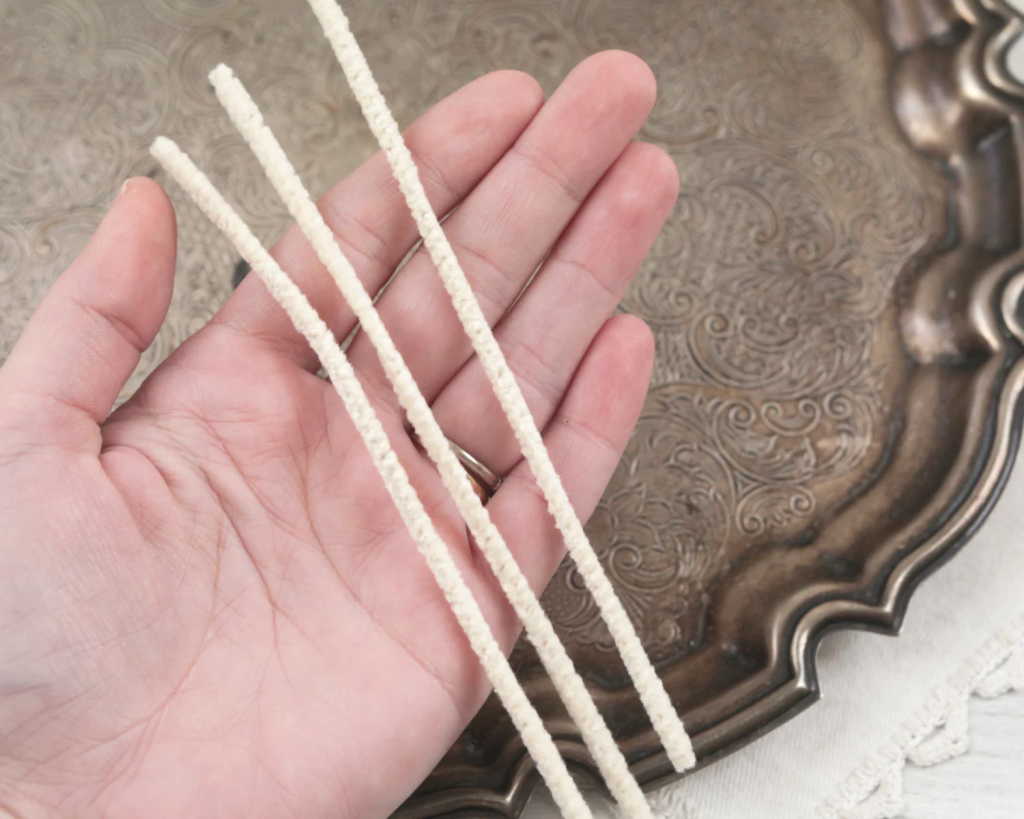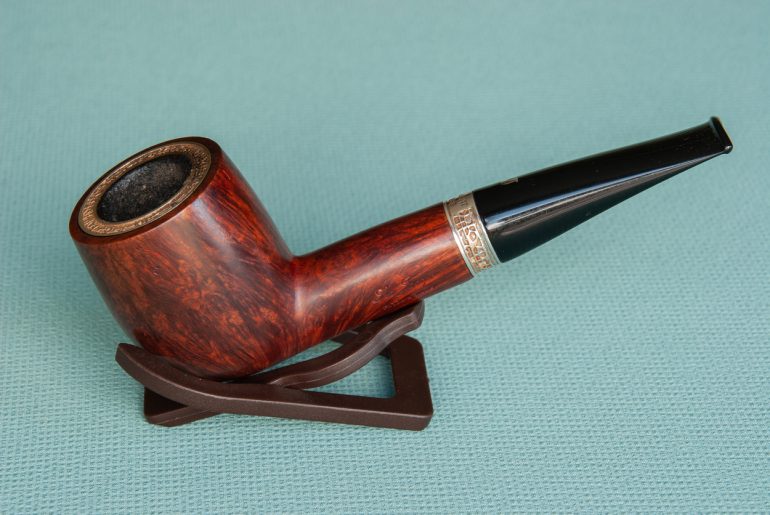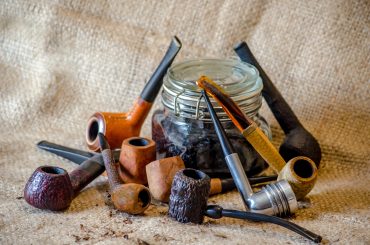If you’re a pipe smoker, you know a new briar tobacco pipe is like a blank canvas waiting for your artistic touch. Just like any work of art, it takes time and patience to bring out the full potential of your new pipe. In this guide, we will explore the process of adequately seasoning a new briar pipe to ensure you get the best smoking experience possible. Whether you’re a seasoned pipe smoker or new to pipe smoking, these tips will help you get the most out of your new pipe.
Make sure also to check out our guide on Beginner’s Guide: How to Smoke a Briar Pipe.
Understanding the Importance of Seasoning
Before diving into the step-by-step process, let’s delve deeper into why seasoning a new briar pipe is necessary. When you first acquire a new pipe, the bowl’s interior is made of bare wood, which lacks the protective layer that develops over time in well-used pipes. This layer, known as the carbon cake, is crucial in delivering a smooth and flavorful smoking experience.
Seasoning a new pipe is essential because it:
- Creates a Protective Layer: The carbon cake is a protective layer inside the bowl. It insulates the bare wood from the direct heat of the burning tobacco. This prevents the wood from charring and preserves the integrity of your pipe.
- Protects the Wood: Briarwood is porous and can dry out and crack if not properly cared for. The carbon cake helps seal the wood’s pores and prevent moisture loss.
- Enhances Flavor: As the carbon cake builds up, it absorbs and releases flavors from previous smokes. This contributes to the unique and rich flavor profile that seasoned pipes are known for.
- Prevents Overheating: Without proper seasoning, smoking in a new pipe can result in excessive heat, a bitter taste, and even tongue bite due to the absence of this protective layer.
- Improves the Smoking Experience: A well-seasoned pipe will produce a cooler, more flavorful smoke. This is because the carbon cake helps absorb heat and prevents the tobacco from burning too hot.
Now that we understand why seasoning is essential let’s move on to the tools and steps you’ll need to season your new briar pipe properly.
Tools You’ll Need
Before we get started, gather the following tools and materials:
1. New Briar Pipe: The star of the show, your brand-new briarwood tobacco pipe.
2. Tobacco: Choose a neutral tobacco with low sugar content for the first few smokes to avoid overheating and bitter flavors. Pure Virginia tobacco is the best option here. Check out our guide on Selecting the Right Tobacco for Your Pipe.
3. Pipe Cleaners: These are essential for keeping your pipe clean before, during, and after the break-in period. Please don’t skimp on the pipe cleaners; they are cheap, but pipes certainly aren’t.
4. Pipe Cleaner Holder: A small accessory that helps you run the pipe cleaner through the stem and into the bowl.
A Step-by-Step Guide to Seasoning Your Briar Tobacco Pipe
Now that we’ve got our tools ready let’s walk through the steps to season your new briar pipe properly. You’ll notice references to pipe tools. Read our article on Pipe Tools Explained: From Tamper to Pipe Cleaners for more detailed info.
Step 1: Preparing the Pipe

Start by disassembling your new pipe. Remove the stem from the bowl to access the chamber’s interior. Inspect the pipe to ensure there are no obstructions or debris inside. Any foreign material left in the pipe can disrupt the formation of the carbon cake (sometimes called a ‘dottle’).
Step 2: Initial Pipe Smoke
For your first smoke, choose mild tobacco, like Virginia. It’s important to note that you don’t need to fill the bowl thoroughly. It’s best to start with about half a bowl’s worth of tobacco. The goal is not to smoke for flavor but to begin forming the carbon cake. To achieve this:
- Fill the bowl around one-third to one-half full. You’re not packing to smoke, so tamp the tobacco lightly.
- Light the middle of the tobacco to prevent burning the wood.
- Smoke slowly and gently.
- Avoid puffing too frequently or drawing too vigorously.
- Keep the temperature inside the bowl as low as possible to prevent overheating.
- Smoke your pipe twice a day for a week or two. This will allow the bottle to build up evenly.
If you pick up a strange taste, don’t be alarmed. It may be some leftover resin in the wood, or the factory coating used to protect the bowl’s inside. The best you can do is be patient and smoke through it.
Step 3: Gradual Pipe Packing Method
It’s crucial to employ the gradual packing method during the initial smoking sessions. This technique involves the following steps:
1. Light Packing: Gently load the tobacco into the bowl without pressing it too firmly. Remember, pack a partial bowl! Around a third to half a bowl is all you need when seasoning briar pipes.
2. Initial Lighting: Use your pipe lighter to ignite the tobacco. Ensure an even burn across the top surface. Take care not to burn the sides of the bowl.
3. Gentle Tamping: As you smoke, occasionally tamp down the burning tobacco gently. This helps maintain an even burn and prevents the tobacco from expanding too much, which can lead to excessive heat.
Step 4: Smoking Cool
When breaking in a new pipe, one of the most important things to remember is to smoke it slowly to keep it cool. The following tips will help you achieve this:
- Avoid Over-Puffing: Resist the urge to puff too frequently. Puffing too vigorously can lead to overheating and an unpleasant smoking experience. You want the tobacco to smolder, not burn hot.
- Sip, Don’t Guzzle: Take slow, deliberate puffs to keep the temperature inside the bowl as low as possible. Deep puffs and strong draws will only lead to overheating the bowl and potentially damaging the wood rather than building up the cake.
- Pause Between Puffs: Allow a brief pause between puffs to let the tobacco smolder gently. This slow, even burn is critical to proper seasoning. You’re allowing the carbon buildup to do its magic and ‘seal’ the wood against future damage.
Step 5: Cleaning Your Tobacco Pipe

After your first bowl, use a pipe cleaner to clean the stem and the bowl. Gently pass the pipe cleaner through the stem and into the bowl, removing any moisture and residue. This step is crucial for maintaining a clean and well-functioning pipe.
Keep running pipe cleaners through the stem and bowl until they run clean. I mentioned earlier that pipe cleaners are cheap, but replacing a pipe because it wasn’t adequately seasoned isn’t.
Step 6: Repeat and Build
After completing your first smoke, it’s time to repeat the process. Over the next several smokes, gradually increase the amount of tobacco you use and continue to smoke slowly and coolly. The carbon cake will build with each smoke, protecting the bowl’s interior more.
Remember to thoroughly clean your pipe after each smoke to ensure you build up an adequate bowl coating.
A gradual approach to building the carbon cake is essential. It’s better to err on caution and slowly add more tobacco than to rush the process. Rushing can result in uneven cake formation and potential damage to your pipe.
So, new pipe smokers, learn from my mistakes and don’t rush the process. Let me explain. I was rushing to get smoking, and I nearly destroyed my first briarwood pipe. It developed an uneven cake and got clogged quickly because I did not listen to my tobacconist’s advice. Luckily, the pipe still survives to this day and is among my prized possessions.
Step 7: Patience is a Virtue
The process of adequately seasoning a new briar pipe takes time. Don’t rush it. Building a good cake before you can expect a full flavor from your pipe is essential. Many smokers find that achieving the desired cake thickness takes several weeks or months.
Step 8: Deep Clean
Once you’ve built a good cake and are satisfied with the smoking experience, giving your pipe a deep clean is a good idea. Use pipe cleaners and a pipe cleaner holder to thoroughly clean the stem and bowl. This will remove any built-up residue and ensure your pipe continues to perform well.
Make sure to check out our guide on How to Clean and Maintain Your Tobacco Pipe.
Additional Tips and Tricks
Here are a few tips for seasoning a new briar pipe:
- Use a neutral tobacco: When first strengthening your pipe, it is best to use a neutral tobacco with a low sugar content. This will help to avoid tongue bite.
- Smoke the pipe slowly: Smoking the pipe slowly will help to build up the carbon cake more evenly.
- Keep the pipe clean: Oversmoking the pipe can damage the carbon cake and make it more difficult to season the pipe properly.
- Deep clean the pipe regularly: As mentioned above, it is crucial to deep clean the pipe regularly to remove any loose carbon and prevent the pipe from becoming clogged.
- Rotate Your Pipes: If you have multiple pipes, rotate them to allow each one to rest between smokes. This prevents excessive heat and helps extend the life of your pipes.
- Consider Meerschaum or Clay Pipes: Meerschaum pipes deliver a pure smoking experience without extensive seasoning. They are an excellent option for those who prefer a milder flavor. Clay pipes are another fantastic option to experience the true essence of your tobacco.
Troubleshooting
If you are having trouble seasoning your new briar pipe, there are a few things you can do:
- Check the packing method: Ensure you are packing the pipe correctly. An adequately packed pipe will burn evenly and help to prevent the tobacco from burning too hot.
- Use a pipe reamer: If the carbon cake is not building up evenly, you can use a pipe reamer to remove some of the cake gently.
- Deep clean the pipe: If you have been smoking the pipe too hot, you may need to deep clean the pipe to remove any damaged carbon.
Frequently Asked Questions
Have you got a burning question? Please read through these frequently asked questions we’ve gathered from all over the internet to bring you the best information in one place.
Is it necessary to season a new pipe even if it has a bowl coating?
Yes, it’s still essential to season a new pipe, even if it comes with a bowl coating. While a bowl coating can offer some protection, it’s not a substitute for a well-developed carbon cake. Proper seasoning creates a more reliable and flavorful smoking experience over the long term.
Can I use an old or estate pipe without seasoning it again?
It’s advisable to season an estate pipe, even if it has been used before. This ensures you have a consistent and well-established carbon cake in the bowl. When you acquire an estate pipe, follow the same seasoning process as you would for a new pipe to enhance its smoking performance.
What’s the difference between briar and meerschaum pipes in seasoning?
Meerschaum pipes are unique because they don’t require extensive seasoning like briar pipes. Meerschaum naturally absorbs tobacco oils and flavors, creating a pure smoking experience without a carbon cake. However, it’s still essential to smoke meerschaum pipes slowly and carefully to avoid overheating and ensure longevity.
Can I accelerate the seasoning process in my new briar pipe?
While it’s tempting to speed up the seasoning process, it’s not recommended. Rushing can lead to uneven cake formation and potential damage to your pipe. The gradual approach is crucial for a well-balanced carbon cake and a superior smoking experience, so patience is the key.
How often should I deep clean my briar pipe during the seasoning process?
Deep cleaning of your briar pipe is essential to maintain its performance. During the seasoning process, it’s a good practice to deep clean your pipe after every few smokes or when you notice excessive residue buildup. Keeping your pipe clean ensures that the carbon cake forms evenly and enhances the flavor of your tobacco.
Conclusion
Properly seasoning a new briar pipe is a rite of passage for pipe smokers. It’s a process that requires patience and dedication but is well worth the effort. Developing a good carbon cake will result in a smooth and flavorful smoking experience lasting for years.
Remember to smoke slowly, avoid excessive heat, and clean your pipe regularly. Your new pipe will become a trusted companion with time and care, providing countless hours of smoking pleasure. Enjoy the journey of breaking in your new briar tobacco pipe and savor the full flavor it will eventually deliver.
In the world of pipe smoking, breaking in a new pipe is akin to seasoning a cast-iron skillet – it takes time and effort, but the rewards are well worth it. So, fire up that new briar pipe, take your time, and enjoy the journey of creating a well-seasoned pipe that will enhance your smoking experience for years to come. Happy smoking!


